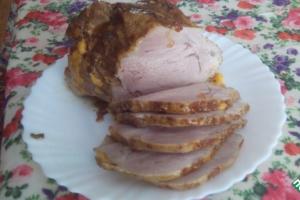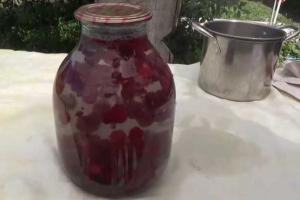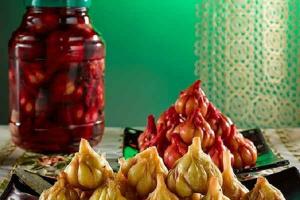About a year ago, the Agropak company, specializing in the supply of equipment and materials for pre-sale preparation and packaging of vegetables, included a new aspect in its scope of activity - equipment for sorting apples. FruitNews journalists talked about the emergence of a new direction with Roman Kalinichenko, equipment sales specialist at Agropak.
- Please tell us what influenced the decision to expand the scope of the company’s activities?
The first thing that played a role was the growth of the apple industry compared to vegetables and fruits. Gardening is on the rise and will continue for quite some time. Any business-oriented company sees that this niche will have good prospects in the future. The company has experience working with foreign suppliers, has engineering, and it was decided to use these resources to develop a new direction, which in the future should provide financial benefits. We decided to “pump up” this area, develop it and deepen it.
How did you choose a partner to supply equipment in this segment? How did you decide which company to bring to the Russian market?
There are not many companies on the market that could develop this area in professional level. We chose a fairly large company that, firstly, could provide such a territory, cover such a market without serious delays in production. Because the market is quite large, there are many requests, and a small factory cannot cope. Secondly, in terms of equipment reliability. The Greefa equipment we chose is precisely industrial equipment; it has great accuracy and can operate 24/7, as it is designed for long-term, reliable operation.
- As a result, do you offer only Greefa lines to apple producers?
We supply the complete line - from start to finish. From sorting to packaging solutions. At the same time, individual solutions from various suppliers are integrated into this line. The packaging complex usually includes equipment for packaging in polyethylene or mesh from the companies Ulma or Gillenkirch, and weighing dispensers from Newtec. By the way, Greefa itself makes the simplest packers in plastic bags with tape. But when more is required difficult option with a more beautiful sealed bag and accurate weight, Newtec and Gillenkirch equipment is used.
- Have you conducted research on what packaging for apples is most in demand in our market?
I think that our apple market has not yet formed, so it is difficult to say what packaging will be in demand. Nowadays, many apples lie scattered on the supermarket shelf and people pick them up in a bag and weigh them themselves. But if you look at Poland, at Europe, they use packaging in breathable polyethylene or polypropylene. This packaging looks better on shelves and is more attractive than mesh. Polypropylene bags are more shiny, more vibrant. Such packaging may be the future. But it’s difficult to say now, since the market is still emerging.
- Returning to Greefa equipment. What sorting solutions can this equipment offer?
There are several options here. Direct sorting, when a mix of fruit enters the line, is immediately divided into various categories and packed into retail packaging, i.e. in a cardboard box. There may be preliminary sorting - presorting, this is relevant for large volumes, when the product comes in, is sorted, first packed into special containers - bins and then stored in them for some time. Then the calibrated product is fed to the sorting line for final sorting and packaging. This allows you to achieve more high performance and increase the packing speed by one and a half to two times. Since if an uncalibrated product enters the line, then after sorting it is unevenly distributed among the packaging tables and some people are forced to work faster, while others are forced to work slower. And when a pre-calibrated product is used, it is possible to pack exactly what is needed for the specific request of a specific customer in a short time with great speed. Packaging lines also include various systems palletizing, supplying substrates. There are many different types packaging.
What about the functions of the sorting system itself? What does it allow you to sort and which of these functions are again in demand in Russia?
The sorting system has quite a lot of functions. The line allows you to sort fruits by diameter, weight, and color. In addition, there is also sorting by external defects and even by internal defects or sugar content. The most popular among us is sorting by diameter or weight. It's the cheapest. Next comes sorting by color. It is becoming more and more relevant every day, because the demands and requirements of supermarkets are becoming more and more stringent.
The next stage is sorting by quality. This is an even more advanced system. It may also become relevant after some time - especially after long storage, when the apple has some defects. It is also important for those gardens where there is no net to protect the fruits from hail. After all, where there was hail, the harvest was partially destroyed and this apple needs to be sorted somehow. Sort it manually? This is colossal work and a huge human resource. And if you have a line, you can enable quality sorting at a speed of more than 10 tons per hour. And she will sort your apple into a good one and a second-grade apple.
Equipment that allows you to distinguish an apple “by taste” by its sugar content measures the change in the spectrum of the light flux passing through the apple. Thus, an apple can be divided into sweet, less sweet, and so on.
But the most popular ones are still sorted by size and weight. Sorting by weight is more accurate, since it allows you to determine the weight with an accuracy of one gram, and if you cut a layer one millimeter thick from the surface of an apple, you will get approximately 15-16 grams. Accordingly, if the apple is homogeneous, then sorting by weight works much more accurately.
Each apple passes through the weighing head, and the machine knows the exact weight and then associates the weight with the diameter. True, if apples are mixed into one container different varieties and from different gardens, then sorting by weight will not be accurate. And if it comes from the same variety, from the same garden, then the accuracy is higher. The program creates a matrix. For example, we point out that a weight of 30-40 grams is associated with a diameter of up to 65 mm. Next 40-50 grams - 65-70 mm. Up to 200 such programs can be created under various gardens and varieties, as well as under different requirements customers. The program actually sorts by weight, but for the client it gives the result of sorting by diameter. These are the nuances.
- Do you think our market will eventually come to the point of determining internal defects and sugar content?
I think that this will be relevant, but the manufacturer must be quite large, because this is expensive equipment. To pay for the sorting system based on sugar content and defects, the company must pack about 100 tons per day. A small manufacturer will not be physically able to install such a line, because it is expensive. While on a large volume such a line will pay for itself. Accordingly, if there is a tendency towards consolidation and dominance of large manufacturers, then such equipment will enter the market together with them.
Already, many manufacturers are asking questions about the possibilities of sorting by defects. I believe that this direction has development potential. The big advantage is that our lines allow you to start with simple sorting by color, and only then add sorting by defects. The case remains the same, and you can first add only sorting by diameter, then add sorting by color, and then you can add sorting by defects. In the same building. You will just need to change the program and replace cameras based on the same module. Our equipment allows this.
The next direction that the company is considering as a prospect for business expansion is deep processing of potatoes.
The role of processing in the formation Russian market fruits and vegetables will be discussed by participants of the Conference “Fresh Vegetables and Fruits Category: Search for a Growth Trajectory”, which will be held on September 12 in Moscow as part of the Word Food 2017 exhibition, and the FruitTech exposition will help exhibition visitors navigate the variety of equipment, materials and technologies for the production and processing of fruits and vegetables .
In a leap year, there are usually a lot of apples. You won’t eat it all over the summer, but it’s a shame to throw it away. I was wondering how to keep fruits fresh at home. I found my ideal method, and I’ll tell you about everything I managed to find out.
Fruit selection rules
Apples cannot always be stored long enough. The length of time the fruit remains in excellent condition depends on the variety, growing conditions and other factors.

When choosing fruits for long-term storage, pay attention to a few things.
- The fruit must be healthy, without external defects.
- It is desirable for the apple to have a spine(the remainder of the branch).
- The peel should be thick.
Storage duration of different varieties:
| Image | Feature of the variety |
 |
Summer varieties, such as:
Stored for 2-4 weeks at temperatures from 0 to 8 degrees Celsius. |
 |
Autumn varieties, such as:
They can last up to 2 months at temperatures from 0 to 8 degrees Celsius. |
 |
Winter varieties, such as:
Maintain up to 7-8 months at a temperature of 5-6 degrees Celsius. |
6 ways to store apples
Eat various ways storage of these fruits. Regardless of the chosen technique, follow two simple rules:
- The fruits should not touch each other.
- Try to place fruits with the cuttings facing up so that the seeds do not germinate.
Do not wash the fruits before laying - water accelerates the rotting process.
| Image | Instructions |
 |
Method 1: Using paper.
|
 |
Method 2. Multi-layering.
The essence of the method is to protect winter apples from contact with each other.
Examples of materials:
|
 |
Method 3. Earthen pit.
|
 |
Method 4: Using packages.
|
 |
Method 5. Ultraviolet protection.
|
 |
Method 6. Wax treatment.
|
Apple storage conditions
It is possible to keep fruit fresh for as long as possible only if a number of conditions necessary for the fruit are met. And you won’t be required special costs, the only price is careful treatment of the fruits.
Condition 1. Sorting apples
Before storing apples in the cellar during the winter, they must be properly stored. Experienced summer residents it is recommended to pay attention to sorting Special attention– the storage duration depends on this:
- It is better to store different varieties of fruit in separate containers.
- It is recommended to sort the fruits by size.
- Sort fruits by quality– place the softer ones closer so that you can eat them first.

Condition 2. Storage space
- fridge;
- balcony;
- attic;
- basement.
During cold weather, it is recommended to cover apples stored on the balcony, basement or attic, for example, with an old blanket.

Condition 3. Storage container
Apples can be kept in almost any container. It could be like cardboard box, so wooden box or wicker basket.
The requirements are the same:
- purity;
- strength;
- presence of holes for air entry.
It is better to disinfect the box or drawer in which other products were stored before use.

Condition 4: Humidity and Temperature
To understand at what temperature to store apples, pay attention to the variety. For example, summer varieties those with thinner skins require heat. The average temperature of the fruit is from -1 to +4 degrees. Acceptable humidity is 85-95%.

Types of blanks
Processing apples and storing their derivatives is not an easy task. What to do with the fruits, and how to store dried apples at home?
There are a great variety of preparation methods. I will describe the most popular ones:
| Image | Recommendations |
 |
Soak.
This method is perfect for winter and autumn varieties:
|
 |
Drying.
There is no easier method than drying apple fruits. It is enough to cut the fruits into slices and place them in the sun or in the dryer. How to store dried apples? Any cotton bag will do. |
 |
Making puree.
|
 |
Making jam.
|
|
|
Today there is high competition in the apple trade. In chain stores on the shelves, most of the fruits are imported, and only a small amount are domestic. Small neighborhood stores or market stalls also do not have an abundance of variety of domestic apples, and even if they are present in the assortment, they cannot boast of their quality.
How to increase apple sales and attract consumers so that they can buy apples from you and not somewhere else. If you read the previously written article about, you will notice the main difference between an imported apple and a domestic one – the appearance.
An imported apple always has a neat appearance: round, shiny, and has no damage to the skin. An apple from a domestic producer rarely looks as impressive, but in terms of taste it has no competitors. This means we can conclude: in order to increase competition, increase the demand for apples from local producers, as well as increase the sale of apples in general, it is necessary to improve the quality of appearance.
How to do this?
Let's think about what could affect appearance apples and ruin the beauty?
Apple diseases
· Pests.
· Apple “caliber” – the size of the apple in diameter.
We have already talked about how to deal with various diseases and pests in our articles; you can find out more about how to deal with various diseases and pests using the links below. Of course, you want to reduce mechanical damage to apples even at the stage of fruit growth, but most of these damages are not so noticeable, and they can only be identified during harvesting.
It would seem that how the size of the fruit can influence the competitive offer, but the apple was born that way, nothing can be fixed. But no. When calibrating, the apples are one to one; there is no such thing as apples of sizes 55 mm and 75 mm in diameter lying next to each other. In addition, you can introduce several “calibers” and thereby increase the demand for the purchase of apples.
Sizing and sorting apples
Sizing apples allows you to get fruits of the same size, but sorting allows you to separate damaged apples from whole ones. This allows us to increase the competitive supply of apples on the market. Let's talk in more detail about each of the processes.
The very first calibration that a manufacturer faces is manual calibration when placing apples in containers. Most often, this is a small board with holes of different diameters; it is placed next to the container, and apples begin to be laid out. The apples are placed individually, having first checked the “caliber” through the board.

The method is not bad, because visual quality sorting also takes place simultaneously with calibration, but it is not intended for large volumes due to a number of disadvantages:
· Long process. Each apple must be passed through a hole in the board.
· Tedious process. A person cannot concentrate for a long time on a monotonous action and examine every apple. After some time, errors may occur.
Therefore, they soon appeared special installations, which allow you to speed up the calibration process literally several times.

The simplest setup would be a small table with a rotating center piece. The apples are fed through a transfer belt onto a rotating element made in the form of a small cone, then they roll down to the base of the element, but rest with the upper edge against the “gate”, which is installed at the required height and corresponds to the caliber of the apple. It turns out that large apples cannot fit into the small “gates”, and pass them further until they match the size of the next ones.
This calibration process is much faster than a manual one, it allows you to calibrate large volumes of apples, but requires manual sorting by apple quality.
Progress does not stand still, and today there are automatic lines that allow you to simultaneously calibrate and sort apples according to given parameters. At the same time, they require minimal human intervention in the process.
The lines are assembled from several components, which may differ in their functionality, but the principle remains the same.
· Feeding apples to the line
Mechanical feeding: This is when the apples are transported in a container, and then they are transported further along the transport line.
Water channel system: in this case, the apples are immersed in a special receiving pool, where the initial washing takes place, and then they enter the next block.
Each of these systems can have either manual or automatic loading.
· Sorting and calibration unit
Modern methods make it possible to calibrate and sort apples according to many parameters: weight, apple color, damage, sweetness. In the case of sorting for sweetness, samples for sugar are taken from apples.
That is, at the output of this line we immediately get a calibrated and sorted apple, actually one to one. The computer that is responsible for sorting is very accurate and rarely makes mistakes, so the person working on the line can only put the apples into containers.
In the case of feeding apples through water channels, in front of the sorting block there is a drying block, where the apples are dried so that dust does not stick to the wet apple, and there are no large errors when weighing the fruits.
· Packaging of apples at the exit
This block can also have different design variations. Most often this long table with receiving trays. In this case, only the specified apple is supplied to each tray. For example, only red 80-caliber apples are served on the first table, a red 65-caliber apple is served on the second table, and a slightly damaged apple of any color and 70-caliber is served on the third table.
Near each tray where apples are supplied, there is a worker who puts the received apples into containers.
This line also has disadvantages: a very high purchase price and Maintenance, and the large occupied area of the sorting complex.
Let's sum it up
In order to improve the competitive offer on the market and increase sales of apples, the farm needs to organize any of the listed methods of sorting and sizing apples.
You can choose any of the proposed solutions, but you must remember the main disadvantages of each method.
Of course, to collect a rich harvest of apples at own dacha- this is one of the primary tasks for every gardener. However, it is important not only to pick the fruits from the tree, but also to provide them proper storage. I especially crave a fresh apple when cold weather sets in. Well, who among the summer residents does not dream that the collected apples retain their natural properties for as long as possible? taste qualities? At the same time, not everyone knows how to store apples for the winter.
It should be noted that an apple picked from a tree does not “die”; it continues to live, inhaling oxygen and evaporating moisture. How to create optimal conditions for the above processes?
It is the study of the question of how to store apples for the winter, and the application of this knowledge in practice that will help in this. It is very important to remember that these fruits are classified as perishable, so it should be emphasized once again: the main component of success is the creation of the necessary conditions for storage.
Decide on storage location
Naturally, considering the question of how to store apples for the winter is meaningless without deciding another: “Where should the fruits be stored?” If you ignore it, you may simply lose your harvest, and all your efforts to grow the fruit will be reduced to zero.
Experienced gardeners know that apples for the winter are usually stored in the basement and on the balcony.
The type of apple also matters
The shelf life of the fruit in question depends on the variety. Those who want to know how to store apples for the winter must learn to understand their species diversity.

There are summer varieties with thin and delicate skin, there are autumn varieties, which have a skin of medium thickness, and there are also winter ones, characterized by a rough shell and a specific waxy coating.
Pay attention to the skin of apples
When deciding how to properly store apples for the winter, the thickness of the fruit peel is of fundamental importance, since it is this that prevents the fruit from drying out and shriveling, and also does not allow harmful insects to penetrate it.
It is the varieties with rough skin that can remain fresh and juicy for the longest possible time. For this reason, winter varieties of apples are considered the most suitable for storage, while autumn and summer varieties begin to deteriorate within a few days after harvest.
How to pick apples
Don't know how to preserve apples for the winter? It is very important not only to learn how to choose a variety of fruits, but also to collect them correctly. This should be done at the end of September or at the beginning of October, and there is no need to wait until the fruits are fully ripened. They must be carefully removed from the apple tree along with the stalk to preserve the waxy coating on the peel. Naturally, the fruits need to be collected, first armed with a basket.

Apple sorting
When considering the question of how to preserve apples for the winter, one of the key points is the stage of their sorting. What does it mean? After harvesting, you need to sort through the fruits, separating those that are beaten and spoiled by pests. Remember that only whole apples are suitable for storage.
Storage containers
Surely many are interested in the question: “What should I store fruit in?” Boxes made of moisture-resistant cardboard or soft wood are ideal. Make sure they are stable and free of dirt particles. Also, they should not have large gaps.
Each fruit must be packaged
It’s good if you can package each fruit separately. Wrap the apple in paper, then sprinkle with one of the following ingredients: maple leaves, buckwheat hulls, moss, sand or husks. In some cases, straw is added to the fruit to increase shelf life, but this technique has one significant drawback: if at least one apple begins to rot, or the process of moisture condensation is activated, then the rot also deteriorates.

If you place fruits in boxes, they should be placed diagonally or in a row.
Storing apples for the winter is a rather troublesome task that requires a lot of effort and time. To increase the shelf life of fruits, they must be treated with an alcoholic infusion of propolis or a 2% solution of calcium chloride before laying.
Storage in sand
Many experienced gardeners When asked how to store apples in winter, they will answer without hesitation: “In the sand.” To do this, you will need fine, clean sand, which must first be dried in the oven. The bottom of the container is sprinkled with a thin layer of sand, on which the fruits are placed, and then another layer of sand is placed on them, the thickness of which should be at least three centimeters. Next, a second batch of apples is placed in the same box, and the procedure is repeated. If you have to move boxes from one place to another, try to stack the apples as closely as possible to each other to minimize the risk of damage.
Storage in paper
A huge number of summer residents do not have the slightest idea how to ensure the storage of apples in the basement in winter. Shelving is ideal for this space.

Fruits should be wrapped in paper pre-treated with petroleum jelly. Experts also recommend sprinkling apples with shavings soaked in mineral oil.
Storage in plastic film
Fruits placed in plastic wrap will also be perfectly preserved until spring. Two layers of film are placed crosswise in the container, and apples are placed on them in even rows. On final stage A plastic film is placed on top of the box in the same way as on the bottom of the container.
Storage in a plastic bag
Some gardeners store apples in plastic bags. Each fruit is pre-cooled and then placed in the above material, which is tied tightly. The fruit is then placed in boxes or on racks.
When apples “inhale” oxygen, they release carbon dioxide into the external environment. It is a kind of preservative, which increases the shelf life of fruits. That is why this storage method allows you to keep apples fresh even on the balcony of a city apartment. The main thing is to comply temperature regime- from +5 to +7 degrees Celsius.
Places to store apples
As already emphasized above, the most appropriate place for storing apples - this is a cellar, a basement or, with the exception of the best, an apartment balcony. The lower drawers and shelves must be placed at least 20 centimeters from the floor, and the upper ones - at least 30 centimeters from the ceiling.

In the upper part of the room for storing vegetables and fruits, the temperature is slightly higher, so products with a maximum shelf life should be placed at the bottom.
Optimal storage conditions for apple varieties grown in middle lane Russia, are such that after harvesting, fruits must be placed as quickly as possible in a room where there is high humidity and low temperature. To normalize the first parameter, experts recommend watering the floors with water, and to lower the temperature, it is necessary to ventilate the room more often at night and when it gets cold.
Mechanical sorting of apples
Competition between producers of fruit products increases the requirements for their quality. Therefore, farms must take care not only of choosing the optimal varieties and planting new orchards with them, but also of preserving and pre-sale preparation of dessert fruits, for which earnings are the highest. The latter is especially true for large
producers of fruit products - they must quickly and on time deliver goods online.
Preparing fruits for sale involves sorting them by size and color, washing and packaging. The complete process is quite labor-intensive, and modern gardening strives to mechanize it as much as possible. The equipment needed for this is produced in countries with developed horticulture - the Netherlands, Italy, Greece, Spain and Poland. Below is a market overview.
Unloaders
Sorting begins with the supply of fruit to the workshop. The container filled with fruit is turned out onto a conveyor line or into a special container filled with water.



receiving container.
To carry out this operation, you will need an unloader. The Dutch company Perfect, known to gardeners for its sprayers and mowers, produces everters and (dry sorters) and unloaders of fruits into water. SK everters are designed for dry sorting lines. It is compact (photo 1) and comes standard with a soft flap for the container and a photocell that helps manage unloading. It is possible to additionally equip the unit with a brush that rotates or is fixed. The lifting height of the container is set manually. The SK model is manufactured with manual, automatic and semi-automatic control.


Operating principle of the SK everer: the container is clamped and closed with a flap using hydraulic mechanisms turn over 135° (almost upside down), raise to a given height and move so that when

move the damper a little, apples could fall on the unloading surface (beginning of the conveyor line). As the fruits pour out, the damper is pushed back further, and the container is raised higher (it moves on inclined guides), to full
unloading The accuracy of the unit's movement is controlled by photo sensors.
The DK model everters are more productive, in particular, the photo sensor controls not only the accuracy, but also the unloading speed. In other respects, the operating principle of the machine is similar to the SK model.
The unloader model FS2 is water type. Such machines are an essential component of modern sorting lines. Its main structural part is the receiving hopper - during operation it is filled with water. All structural elements The machines are made of stainless steel.

The sequence of operations is as follows: a container with fruit is placed on an unloader, which lowers the container into the water, where apples float up from it. They flow by gravity to the transfer points onto the conveyor. Model FS2 delivers fruits gently and carefully - water transport (photo 2) eliminates any damage.
Sorting
Further processing of fruits is carried out using sorting machines - mechanical and optical. The Dutch company Perfect produces sorting machines of all types.
The mechanical sorting machine CGM-5-4 (photo 4) is designed for sorting the harvest of cherries, cherries and plums; it distributes the fruits by size.
Fruits for sorting by
are given on a special platform, from which they fall onto a conveyor belt measuring 3 x 0.75 m. It presents the fruits on five pairs of conical shafts (the diameter of the shaft decreases with length). The shaft axes are parallel. The width of the gap (slot) between the conical shafts is not the same, this helps to distribute the fruits that fall into these cracks by size. The fruits, separated by caliber, go to four different unloading conveyors, from where they reach the packaging tables.
 As standard, the machine is designed for sorting fruits with a diameter of 22-30 mm (with caliber graduation every 2 mm). Machine productivity - 0.4 t/h.
As standard, the machine is designed for sorting fruits with a diameter of 22-30 mm (with caliber graduation every 2 mm). Machine productivity - 0.4 t/h.
The machine can be equipped with a distribution system for slightly larger fruits.
The machine model MGS 250 is also mechanical and sorts fruits by weight, mainly hard fruits(apple, pear). This sorting machine has a cup conveyor (photo 5).
Whether the cup “throws away” the fruit is influenced by its weight. The length of the conveyor is divided into weight sections (sections 70 cm long).

At each segment, the cup unloading mechanism is triggered by a predetermined weight. Such sorting machines are made of 2-4 conveyor lines. Each line of the sorting machine distributes fruit with an intensity of 0.75 t/h.
The operation of the Uni-Cup model sorting machine is controlled by a built-in computer - for this it receives information from optical sensors (cameras). As standard, the machine sorts fruits by diameter. Conveyor lines are equipped with cups that are similar in design to weight sorting cups. However, such a cup does not work by weight, but by dimensions, which are read using cameras (photo 1). The machine is equipped with 2-8 sorting conveyors, each of which is capable of distributing fruits at a speed of up to 1.2 t/h. The lines can be equipped with photo sensors that react to the color of fruits or their defects.
One of the most simple machines for sorting already long time produced by the Dutch company Creefa - this is an A3/UP mechanical unit designed for hard fruits (photo 8).
The principle of operation of the machine: after loading the fruits onto the receiving conveyor, they fall onto a round sorting table with a convex cone-shaped surface, it rotates and distributes the fruits by size. Performance

sorting - 0.45-1.2 t/hour. The machine is compact in size and easy to install. The unit is recommended for small farms specializing in growing apples.
The compact Mini CC machine (photo 9) is designed for sorting fruits weighing 30-450 g with a diameter of 40-100 mm using an electronic weighing device. The machine has six outputs for sorted products; it can be used both in small farms and in large-scale production.
The CombiSort machine (Photo 10) is designed for sorting apples, pears, peaches, apricots, plums, it works with fruits with a diameter of 40-120 mm and a weight of 20-500 g. This is a modern unit that distributes fruits based on data about their scanning (candling) - sorts by size (diameter), color, external and internal defects. Conveyor lines with cups - they unload fruits from the surface or other specified properties. Each machine has up to 10 sorting (conveyor) lines. Such a unit requires a special room; it is 70 m long and is mounted permanently. Recommended for powerful horticultural and vegetable farms and for fruit storage enterprises.
The Easy Sort machine (photo 11) is designed for high-speed sorting of round fruits and works in a similar way

CombiSort. These and other complex units that Greefa produces are controlled using a built-in computer.
The Greek company Olimpias specializes in machines for sorting and packaging fruits. In particular, they produce machines for sorting cherry fruits - Force Cherry (photo 12). The unit distributes fruits using highly sensitive optical sensors (cameras) not only by size, but also by color. The capacity of the sorting line is 0.5 t/h. The sorted fruits are removed from the machine by a stream of compressed air.
PERIPHERY
Peripheral equipment - unloading devices, storage bins, etc. are elected in connection with sorting machines.

 3 liters
3 liters






